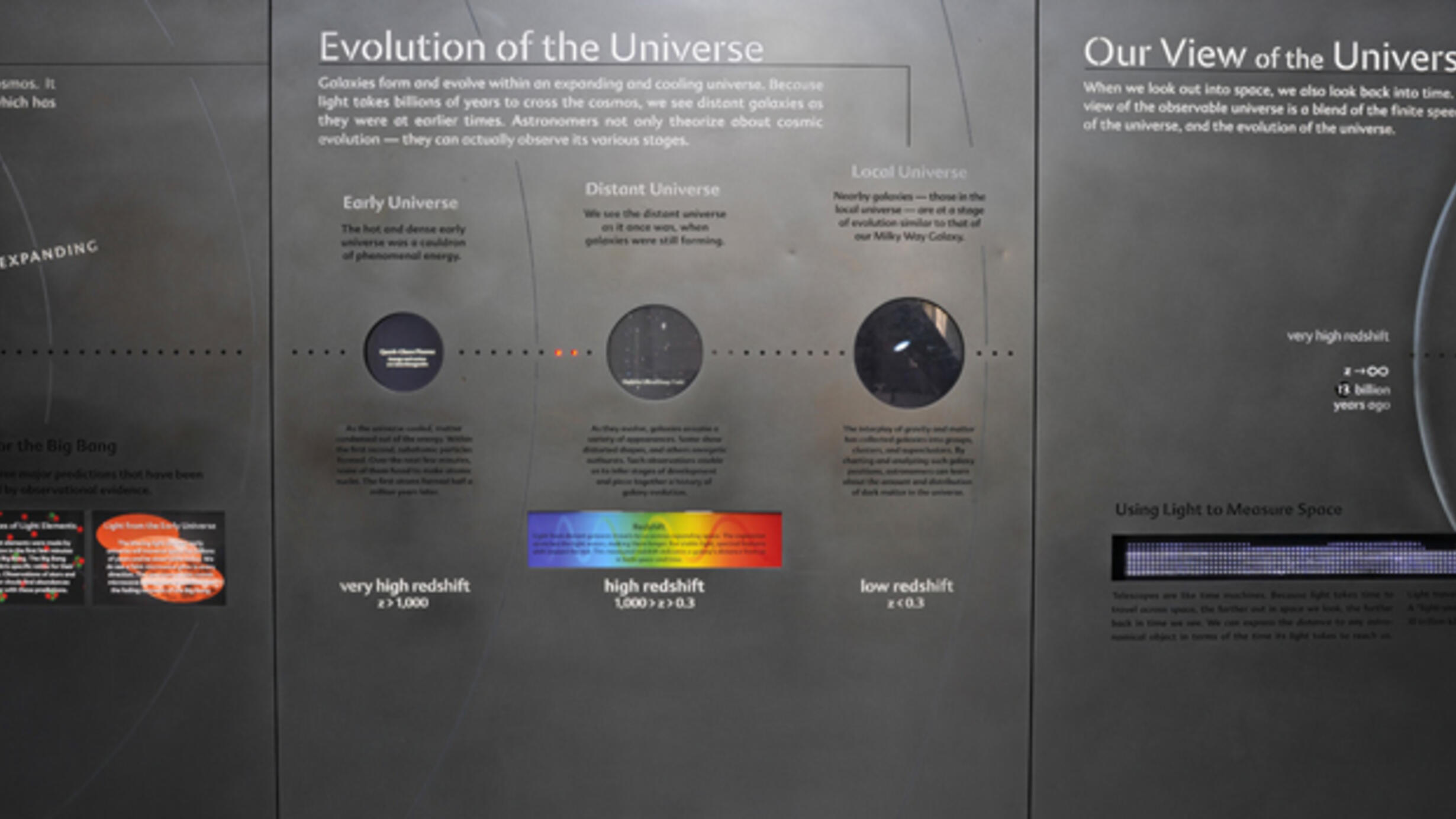Evolution of the Universe
Part of Hall of the Universe.
Part of Hall of the Universe.
 AMNH/D. Finnin
AMNH/D. Finnin Galaxies form and evolve within an expanding and cooling universe. Because light takes billions of years to cross the cosmos, we see distant galaxies as they were at earlier times. Astronomers not only theorize about cosmic evolution - they can actually observe its various stages.
Early Universe
The hot and dense early universe was a cauldron of phenomenal energy. As the universe cooled, matter condensed out of energy. Within the first second, subatomic particles formed. Over the next few minutes, some of them fused to make atomic nuclei. The first atoms formed half a million years later.
Distant Universe
We see the distant universe as it once was, when galaxies were still forming. As they evolve, galaxies assume a variety of appearances. Some show distorted shapes, and others energetic outbursts. Such observations enable us to infer stages of development and piece together a history of galaxy evolution.
Local Universe
Nearby galaxies -- those in the local universe -- are at a stage of evolution similar to that of our Milky Way Galaxy. The interplay of gravity and matter has collected galaxies into groups, clusters, and superclusters. By charting and analyzing such galaxy positions, astronomers can learn about the amount and distribution of dark matter in the Universe.